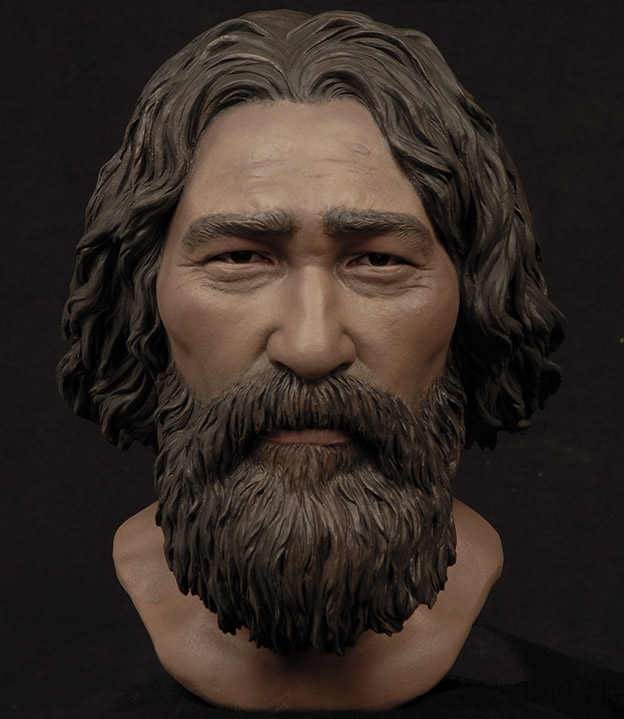Why was the Kennewick Man such a seafood lover?

Sculpted bust of Kennewick Man by StudioEIS with Jiwoong Cheh; based on forensic reconstruction by Amanda Danning; image provided by StudioEIS.
From the moment the Kennewick Man was discovered along the banks of Washington’s Columbia River, nearly 20 years ago, the prehistoric remains have been the subject of both fascination and controversy.
The fully intact skeleton, named for the area in which it was uncovered, is one of the oldest ever found in the Americas, dating back more than 8,500 years. While it has revealed much about the life he led, it has raised many questions about his origins and early human movement.
Scientists from around the world, including McMaster’s Henry Schwarcz, have studied the skeleton, piece by piece.
They now know he died at about the age of 40, had stood 5 feet 7 inches tall, and had lived with an arrowhead lodged in his hip, five broken ribs, two small dents in his skull and an injured shoulder, likely caused from repeatedly throwing spears.
As a widely recognized leader in the isotopic analysis of human bones and ancient diets, Schwarcz, professor emeritus in the School of Geography and Earth Sciences, was recruited to examine a small bone fragment, which yielded some surprising results.
Schwarcz’s analysis is highlighted in a new, peer-reviewed book entitled “Kennewick Man: The Scientific Investigation of an Ancient American Skeleton.”
“We discovered that he had a particular habit in that he seemed to be living on a diet exclusively of marine food even though there were tons of four-footed creatures — elk, deer and the like — running around the banks of the Columbia River,” said Schwarcz.
“He was not eating any of them. It appears from his isotopes that it might not have just been fish, but he might have been eating a lot of seal, which is very odd.”
The findings are significant because seals do not live in the area where the skeleton was found, explains Schwarcz, suggesting the Kennewick Man didn’t actually come from the immediate area and may have lived much closer to the Pacific Ocean.
However, that question still perplexes scientists.
Schwarcz, in collaboration with Western University’s Fred Longstaffe, conducted further isotopic analysis and discovered that the Kennewick Man didn’t appear to drink the local water, another clue which suggests he may have lived elsewhere.
“This is another element of mystery in the story,” said Schwarcz.
The Kennewick Man’s bone structure did not resemble that of Native Americans, and scientists continue to disagree on his origins. Some suggest he may have travelled from Alaska, others suggest the Aleutian Islands, still others argue he came from Asia.
For now, the bones — once at the centre of a court fight between the US federal government, Native Americans and scientists — are housed at the Burke Museum at the University of Washington.

